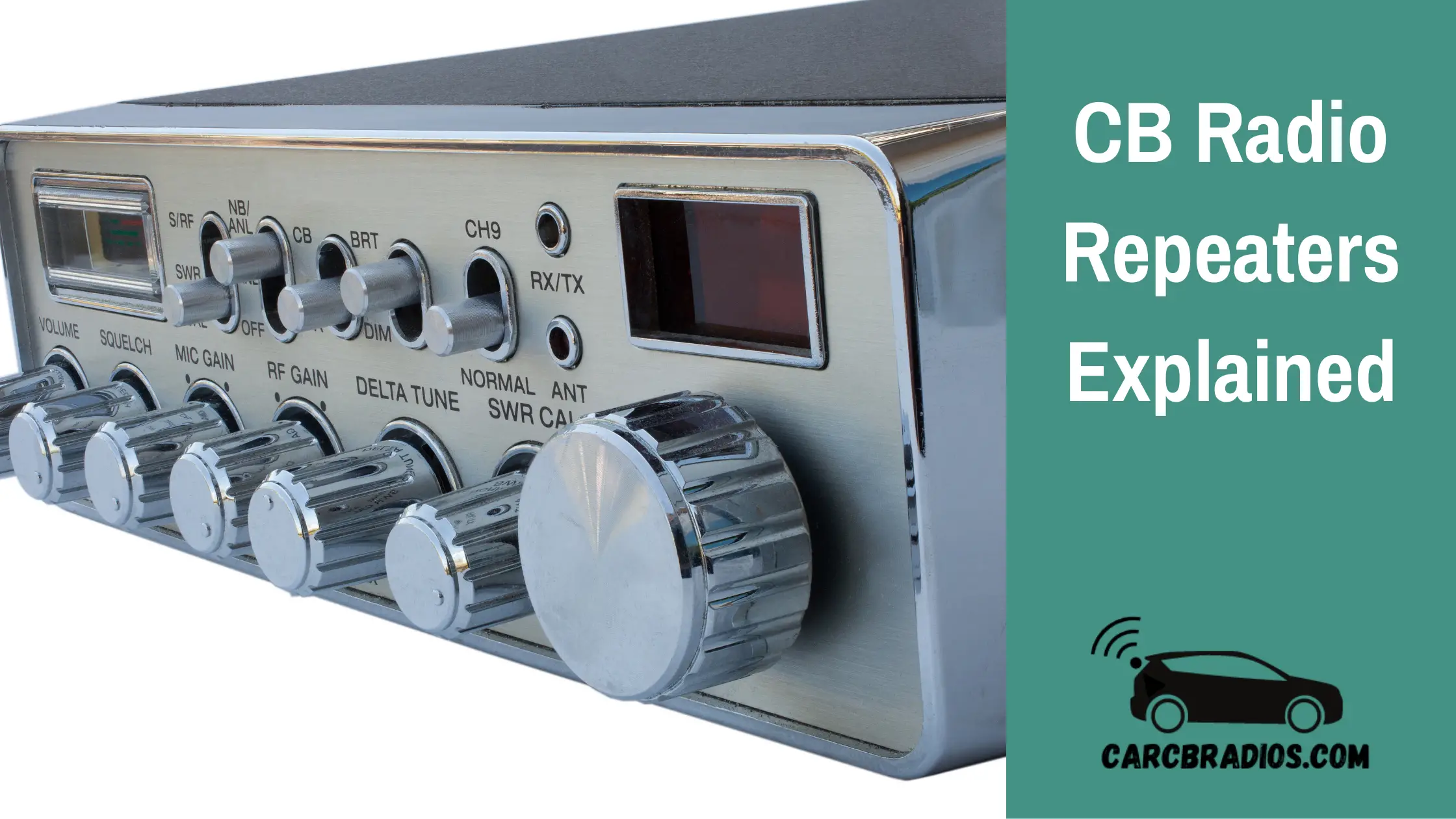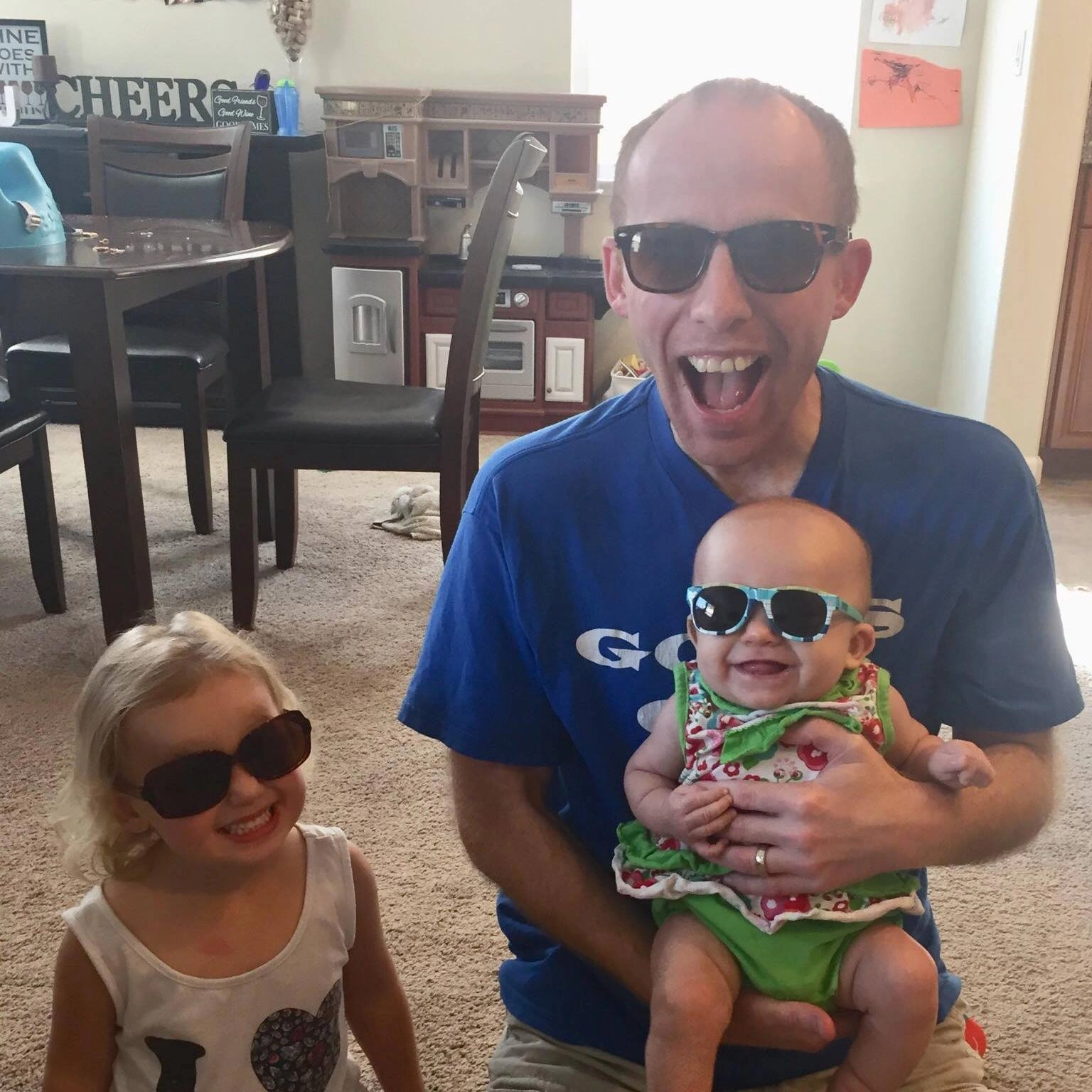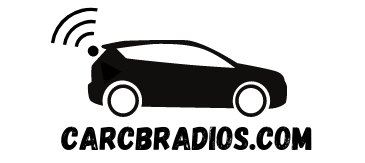By: Jeremy Neisser
To help make it easier, I break down what a CB radio repeater is, how they work, and the benefits of having one. Let's get started:
What is a CB Radio Repeater?
A CB radio repeater is a type of radio setup that can extend the range of your communication signal while using a mobile or base station. These systems work by repeating short bursts of data that have already been transmitted from one source.
This allows you to transmit over longer distances and with better clarity, which makes them ideal for use in heavy traffic areas! Most repeaters operate on channels between 26.985 and 27.405 MHz, although some may go up to 27.855 MHz as well (which are illegal).

CB Repeaters vs Mobile Radios -
Often times communicating through a repeater will be more reliable than attempting to do so directly through another person's mobile radio system due to the ability to cut through any interference that may occur.
Built-in Repeaters -
Some modern CB radios (those from the last decade or so) come equipped with a built-in repeater system. Often times this will be in the form of a few different channels, allowing you to switch back and forth between regular channels and repeater systems at will. These systems are RF-based and have been designed to specifically work within a CB radio, so they will almost always be much easier to use than a standard repeater.
Keep in mind that if you add this type of system onto an older radio it may not work properly - especially if the radio is operating on channels below 26 MHz.
What is a Standard Repeater?
A standard repeater is a device that can be installed almost anywhere - vehicles, homes, etc. These systems can be controlled by an operator or they may automatically repeat whatever information they are receiving through a control channel.
Almost all of these devices will employ the use of a radio tower in order to function properly and provide an adequate signal to your radio at any given time. They also operate between 26-27 MHz, which is the general range for standard CB radios.
Standard Repeaters -
If you want greater coverage than what you normally get with your radio then installing a standard repeater might be just the ticket. This is especially true if you'll have trouble making contact with other users who live fairly far away from you.
Standard Repeater Installation -
The installation of a standard repeater is fairly straightforward, although it will drastically change the way you operate your CB device. With one of these systems installed you'll be able to transmit and receive information over much greater distances than what you're normally accustomed to with a single-person radio. Plus, there's some extra fun to be had if other people are also using a standard repeater in your area!
What is a DStar Repeater?
A DStar repeater is an even more advanced type of device that can operate on various radio frequencies and make use of digital technology for quick data transfer. These are designed specifically for ham radios, which means they will only work when connected directly to another radio, similar to CB repeaters.
You might like: What's the Difference between a Ham Radio & a CB Radio?
These can operate on a number of different channels - from 144 MHz to 216 MHz, although most are set up on inputs and outputs of 449.000-450.000 MHz (UHF frequencies).
DStar Repeater vs Standard Repeater -
The biggest difference between a DStar repeater and the standard type is that you will need to have another radio with you in order to take advantage of them (unlike normal repeaters).
This means that you must be taking along a mobile or base station wherever you go if you wish to use one of these systems!
Installing a DStar Repeater -
Installing digital technology onto your mobile or home radio system can sometimes be tricky due to the use of different radio channels. However, this should be a fairly straightforward process if you have the right equipment and enough time to dedicate to the installation.
DStar Repeater Pros:
DStar Repeater Cons -
DStar Repeater vs Standard Repeater -
The choice between standard and digital repeaters is ultimately yours. If you're simply looking for an extra boost in your network, then a DStar system might do the trick. However, if you rely heavily on CB communication or other forms of traditional communication then an analog setup should suit your needs better!
Repeaters With 2-Meter FM Radio Systems
If you're tired of manually repeating transmissions over and over again (which is all too common with typical CB setups) then you may want to consider upgrading your system by adding additional components that'll allow for greater transmission distance and better audio quality.
2-Meter FM Radio -
The 2-meter radio is designed to boost your signal over a much longer distance than standard CB radios (as well as improving the sound quality of any voice transmissions) without all of the hassle associated with mounting a full repeater box on top of your vehicle.
This makes it perfect for those that are planning on using their CB device on a regular basis but don't necessarily need to repeat transmissions 100% digitally!
Repeater Installation -
Installing a 2-meter radio onto your CB setup will be different from the installations discussed earlier in this article. That's because you'll be able to use an external antenna that can transmit signals at high rates of speed without disturbing your vehicle!
CB Repeater Pros:
CB Repeater Cons -
2-Meter FM Radio vs DStar Repeaters -
The choice between digital systems and analog counterparts primarily depends on what type of device you already have and what your primary purpose is for using a CB in the first place. If you don't mind upgrading to an analog setup then traditional radios might be right for you!
Do CB radios use repeaters?
Yes, CB radios use repeaters. Repeaters are used for increasing communication range and improving the quality of transmissions. The main idea behind the repeater is to amplify the signal until it reaches a large range, sometimes several miles from its source.
There are two forms of repeaters: low band and high band. Low-band repeaters operate on the 40 channels from 26.965 MHz to 27.405 MHz, while high-band repeaters operate on the 13 channels from 28.000 MHz to 29.700 MHz (AL).
The technology behind CB radio is more advanced than you thought - and that's a good thing! Modern systems are designed for ensuring clear communication between users no matter the distance.
Can you set up your own repeater?
Yes, you can set up your own repeater. Understanding how a CB radio works and its technical parts is necessary for building one.
And before setting it up, it's important to have a license of such device or an equipment certification (FCC). This is because the FCC rules state that communication devices should not be used without proper registration.
Are CB repeaters legal?
This is a tricky question, but one that can be answered quite easily. In short, yes! As long as it's legal for you to use your CB radio and the repeater falls under the following qualifications:
Its transmitter output power must not exceed 4 watts; It may only rebroadcast transmissions between two local or mobile stations - in turn, no more than 5 miles away; You'll need written permission from the station's owner to use it; and Remember that repeaters are strictly digital!
You should also know that CB radios (unlike FRS and MURS) aren't allowed in Canada or Australia. This means that they don't have the same restrictions on power, frequency, and channels.
Is CB Repeater better than regular CB Radio?
Yes, a repeater is much better than traditional radios. It's easy to use and very convenient when it comes to communicating with people.
The only drawback of using a repeater is that it may cause interferences because it repeats signals of all channels in the range. A small interference is normal but a big one can cause problems. When this happens, it's necessary to turn off the device in order to avoid further issues.
CB Repeater is not as complex as you may think - and it's a good thing if you're on the lookout for a great radio system that'll give you more range with the clearer sound quality!
What is a simplex repeater?
A simplex repeater is a device that connects two users using only one channel, without repeating broadcasts. This type of system can be used by both analog and digital radios (DMR). In effect, this creates direct communication between the two parties. Therefore, it does not cause interference for other users in the area.
What is a duplex repeater?
A duplex repeater is a device that uses two channels for one-to-one communication. In this case, it receives one channel, retransmits it on another channel and then returns the signal back to its original format.
This type of transmission is not suitable for analog radios but only digital ones with data coding capabilities. What is a dual-band repeater?
A dual-band repeater is used to connect two users using one channel instead of repeating broadcasts. This type of system can be used by both analog and digital radios (DMR). In effect, this creates a direct communication between the two parties. Therefore, it does not cause interference for other users in the area.
What is a crossband repeater?
A cross-band repeater allows you to use two different frequencies at once! This type of system can be used by analog and digital radios (DMR). Depending on how it is set up, a cross-band system has two input ports or one port and two output ports.
The first configuration allows the operator to transmit in one band and then receive in another, while the second configuration is used for simultaneous transmission and reception of radios on both bands.
What are the advantages of using a CB repeater?
There are many advantages of using a CB repeater.
A few them include:
Benefit 1:
Improved range. A repeater will amplify your signal - giving you better reach and in some case, even a few miles away from the source.
Benefit 2:
Better sound quality. Your voice or message will be transmitted with clarity, without static interference.
Benefit 3:
Easy to use. You can set it up and start using it right away because there's no complicated process involved!
The only disadvantage of using a repeater is that it may cause interference to other people in your area. This can be solved by changing the device's power output and also adjusting its setting.
Should you use a repeater for better range?
In short, no! If you want to greatly expand your range or if you travel often within the city or on the road, then a repeater is not for you. In fact, it's an unnecessary device if your goal is to have better range because your traditional radio can already reach up to 10 miles from its source of origin.
Also, note that the sound quality won't be as good as compared to a cell phone or other devices. And lastly, it may cause interference to people in the area.
How do you use a simplex repeater?
When using this type of system, it's necessary to remember these important things:
Use only one channel (when applicable). Choose a channel that is not being used by other radios within your range; otherwise, your message will be rebroadcasted by the repeater - in turn, causing interference.
You should also know that if you accidentally change your channel to one that's already being used, then the repeater will assume that it's not a simplex system and automatically transmit to all channels.
Use only one radio at a time. This applies only to analog radios because a DMR repeater only allows one radio at a time. If you try to use more than one radio, then all of them will transmit on the same channel - in turn, causing interference and confusion for other users around you.
Do not change your settings or level of output power. Lest you end up with another repeater!
What does it mean that the repeater is set to a different offset?
When you hear someone talk about setting up a different offset or tone, then they're referring to the channel's frequency. This basically means that it can be shifted by plus or minus 300Hz from the standard 490 (or 439) MHz CB, giving you an extra 200Hz of frequency to work with.
What is the difference between a repeater and a base station?
Simply put, these two are completely different devices. A repeater receives an incoming signal and rebroadcasts it to extend the range of the user (between 1-5 miles), while a base station connects several users inside its own equipment or channel - in turn, creating group communication.
Base stations can be helpful when you want to speak with a large number of people at the same time - for example, if there are 5 people in your neighborhood who have the same hobby.
Do you need to be a HAM operator to set up a repeater?
For certain types of repeaters, it's necessary to be licensed by the FCC (Federal Communications Commission). However, there are several others that only require permission from one particular channel and approval from an administration.
How much does it cost to use a CB repeater?
Reasonable and fair fees should be charged to protect the equipment. Remember that repeaters are expensive devices that need constant maintenance. It's also important to set a fee for services or donations so you can maintain it without interfering with your daily expenditures.
- 2-WAY RADIO: The 15-Watt MicroMobile is a two-way radio device that operates on GMRS (General Mobile Radio Service) frequencies. Its 15 high/low power channels provide increased range, communication over a long range. Its channel scan allows you to search for active channels in the area. The MicroMobile is for camping, hunting, outdoor activities. Its compact size easy-to-use interface makes it convenient for communicating on the go. Dustproof Automatic Noise Cancelling Mic Split Tone Capable
- GMRS: The GMRS channels used by the 15-Watt MicroMobile(R) walkie-talkie are licensed by the FCC for personal and business use. These channels have a range up to several miles, depending on terrain, weather conditions, and obstacles. While a 40-mile range may be possible under ideal conditions, it's important to consider terrain and other factors that can affect the range of the radio in use. For best communication, test the range of your radio where you plan to use it.
- Privacy Codes: The 142 CTCSS/DCS privacy codes of the MicroMobile walkie talkie allow you to select a specific code to use with a particular channel, which helps to prevent unwanted transmissions from being heard on the same channel. This provides a level of privacy and security for your communications, especially in crowded areas where multiple radios may be in use. Use silent operation to turn off all tone.
- NOAA Weather Scan + Alert: NOAA Weather Scan will automatically scan through 10 available weather (WX) band channels and locks onto the strongest weather channel to alert you of severe weather updates. NOAA Weather Alert will sound an alarm indicating that there is a risk of severe weather in your area. NOAA Weather Radio will also be used to broadcast AMBER alerts for missing children.
- Midland MicroMobile: Take your radio range to the next level with the most powerful GMRS two-way radios on the market. These compact radios bring reliable and versatile communication to overlanders, off-roaders, farmers, RV’ers, and others. The MicroMobile is compatible with all Midland FRS/GMRS walkie talkies. Whether on a hunting trip, exploring outdoors, or working on a farm, the MicroMobile can help you stay connected with your team or family, even when you're far from civilization.
How do you make sure the repeater is properly protected?
There are a few ways to do this:
- By requiring permission to use the repeater. This will guarantee that everyone using it is technically and legally qualified. By having a radio check whenever they want to use it. This can be done for both users and administrators alike - just make sure that you're talking on the correct channel! By living by the rules of tolerance, consideration, and respect. This will greatly help in ensuring that everyone uses it for the right purpose.
- When everything has been said and done, remember that repeaters only increase the range of your communication - they do not replace it! It's still important to practice good operating habits and always be aware of your surroundings when on the road.
Conclusion: What is a CB Radio Repeater
I hope this article answers all of your questions surround CB repeaters.
You may like:

Hi & Welcome!
My name is Jeremy and I have been an avid car nut for many year. My first car was an 1987 Honda CRX. I put in my first Kenwood stereo, amp, 2 10" JLs and a CB Radio in it and have been an avid user of CBs and car radios for years. I'll do my best to share my tips, information and thoughts to help you with whatever question you might have, ABOUT ME
After I graduated from High School, I worked 5 years are Radio Shack and 3 years at Circuit City answering questions and helping customers with various electronics questions.




